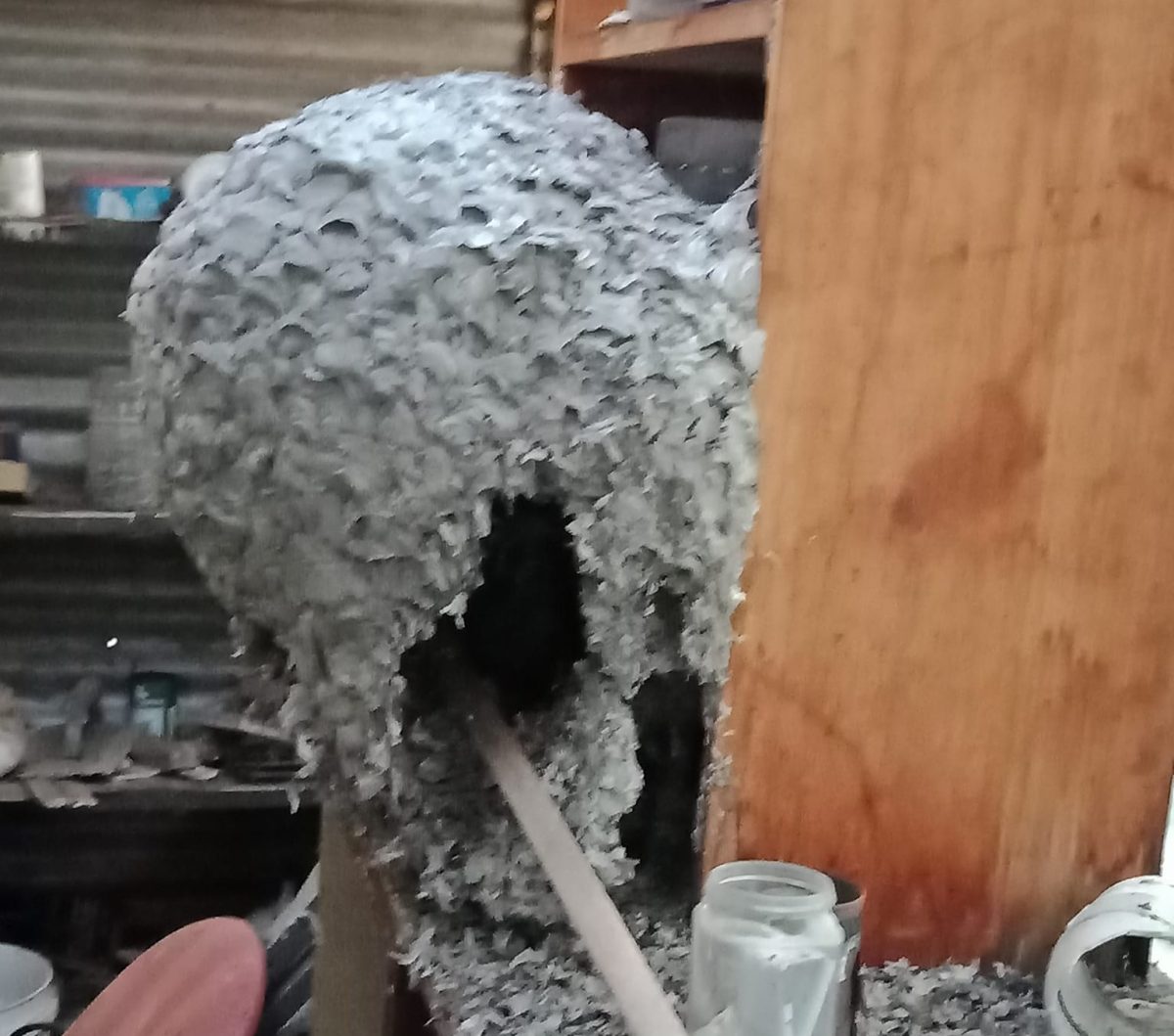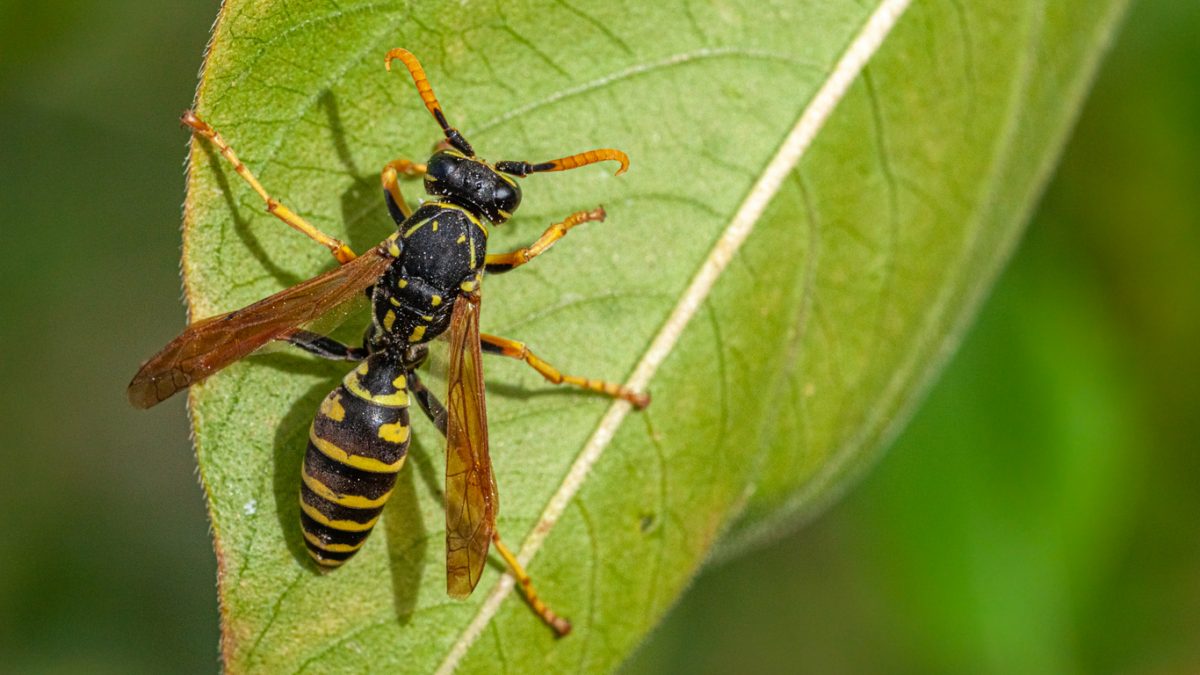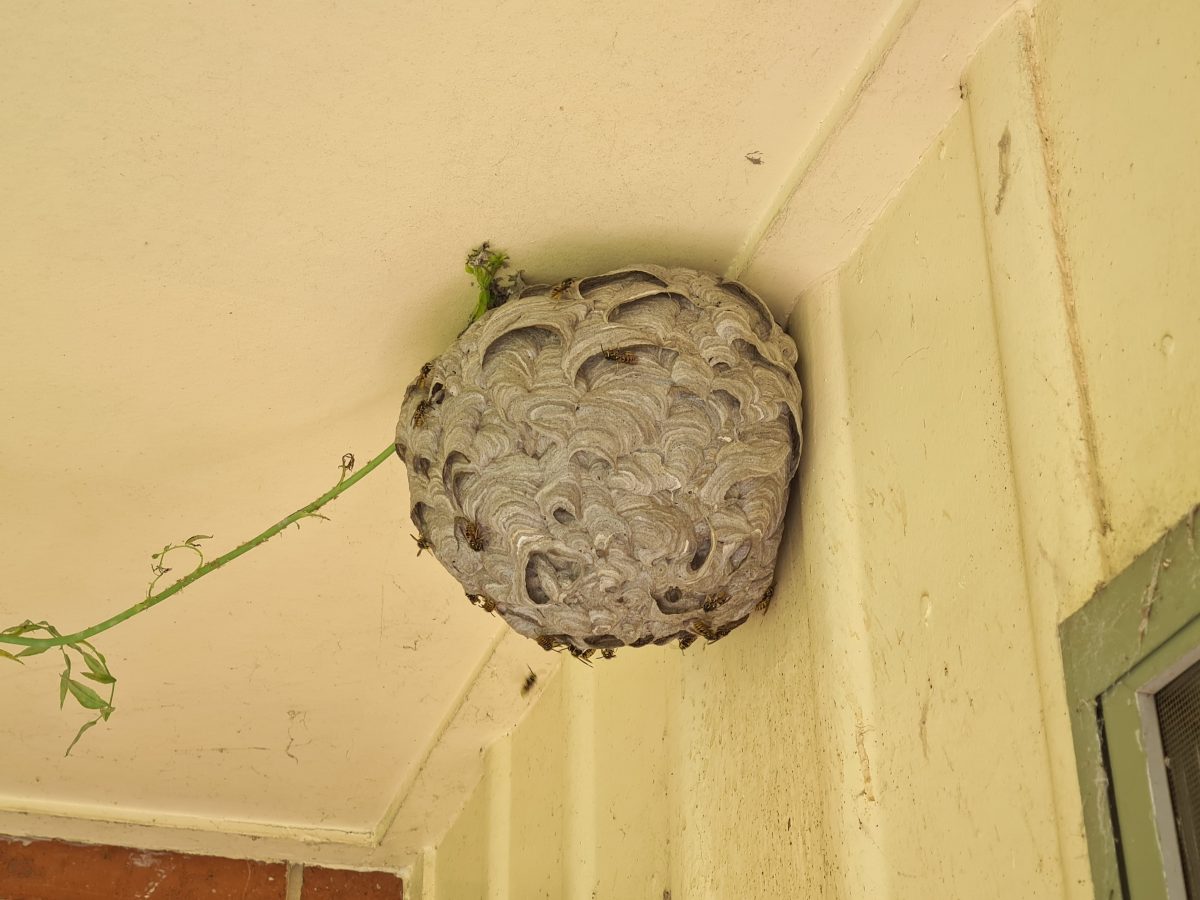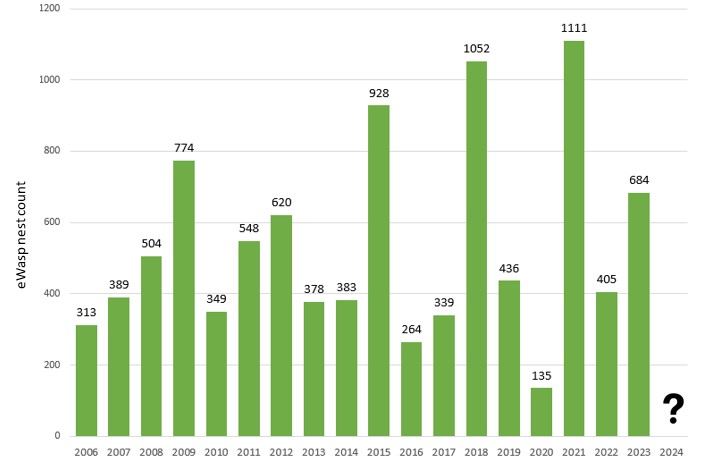
Roger Grime posted the images of the nest to the Canberra Notice Board Group on Facebook. Photo: Roger Grime.
Roger Grime was in for a shock when he opened the door to his mum’s shed.
A grey-coloured flaking mass like a medieval knight’s helmet or human skull made from paper mache was sitting atop the workbench, a broom handle leading into its ‘mouth’ like a drawbridge to a castle.
“I’ve never seen anything like it before and it’s kind of creeping me out,” he told the Canberra Notice Board Group on Facebook when reaching out for advice.
“It’s about the size of a basketball, and something has put a lot of effort into it … It’s made out of some grey organic material like something regurgitated … I haven’t been close enough to see if there’s anything in it.”
It’s likely there’ll be more people like Roger Grime in Canberra this year.
Commenters might have blamed possums or paper wasps for the creepy formation, but CoreEnviro Solutions, the company that manages the eWasp hotline for the ACT Government, has confirmed it was the work of a far more dangerous creature – the European wasp.
And for the coming 2024 season, they’re expecting even more nests.
“It’s made of wood fibre,” CoreEnviro Solutions communications officer Christine Bariesheff explains.
“The wasps chew up different types of wood along with straw and old grass with water to create this sort of fragile grey, textured material. European wasp nests in residential areas are normally hidden in wall and roof cavities … but we have come across aerial nests like this.”

The European wasp is the ACT’s most dangerous wasp species. Photo: File.
Canberra’s wasp season typically starts in September when single queens begin building their nests. Things move quickly, and by April the following year, the nests can have easily grown to the size of the one in Roger’s mum’s shed and contain between 4000 and 7000 workers.
It’s not something you want anywhere near your house.
“Having something like this in your garden shed is quite a concern,” Christine says.
“The European wasp is the most dangerous wasp species in the ACT, and we always discourage people from trying to treat the nests themselves. They are super aggressive and will attack in large numbers. They don’t let up and they don’t die. They will repeatedly sting, and you have to walk quite a distance away from the nest for them to stop.”

An established European wasp nest under the eaves of a Canberra home. Photo: eWasp, CoreEnviro Solutions.
Over the 2022/23 season, 41 people in the ACT have been stung by European wasps, up from 37 in 2021/2022 but down on the 81 victims in 2020/21. Records go back to 2016. The most was over 2017/2018 when 99 people reported stings.
So far, Christine has escaped, but her husband (and CoreEnviro Solutions senior pest and weed officer) Jim Bariesheff has not been so lucky. He even had to be hospitalised when one got him on the forehead. He rates the pain a firm seven out of 10.
“Let me say every time you get stung, you say some pleasant words,” he says.
“You have the initial pain, followed by a burning sensation that lasts for about 24 hours, an itchy feeling after that, and finally a crater around the site that lasts a few days.”
The ACT Government contracts CoreEnviro Solutions to provide free European wasp advice and identification via the eWasp hotline.
In 2021, more than 1111 nests were reported to the hotline, followed by 405 in 2022 and 684 this past season. The average is around 500 per year.
After three sopping wet years of La Niña, Christine and Jim aren’t sure what to expect from the warmer and drier months ahead, but a trend in numbers suggests it will be peak season.
“Going by previous data, we’ve seen a trend since 2006 where every third year in the ACT is a peak season,” Christine says.
“These peak seasons are getting higher in numbers, too. We’re due to have a peak this summer, where the number of reported nests will be up around the 900 to 1000 mark. It’s going to be very interesting to see what happens.”

The number of reported European wasp nests in the ACT. Source: eWasp, CoreEnviro Solutions.
If you do come across what looks like a European wasp nest around your house, do not approach, but move away and call the hotline for advice.
“If a nest is located on residential land, it’s the responsibility of the resident to engage a pest controller to have that nest treated,” Christine says.
“But if it’s on public land, we report that to one of the government rangers who go out and treat it.”
Contact the eWasp Hotline on 6258 5551, email info@ewasp.com.au or visit the eWasp website.












